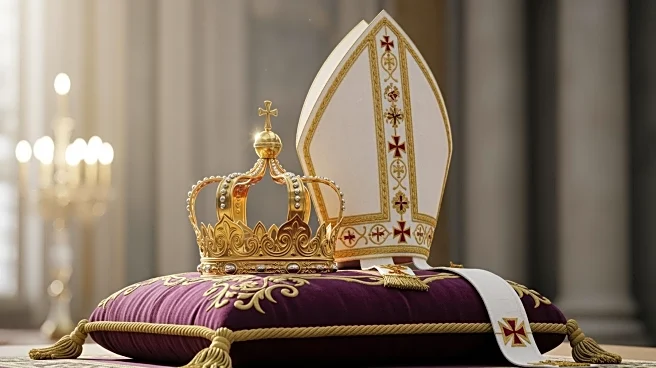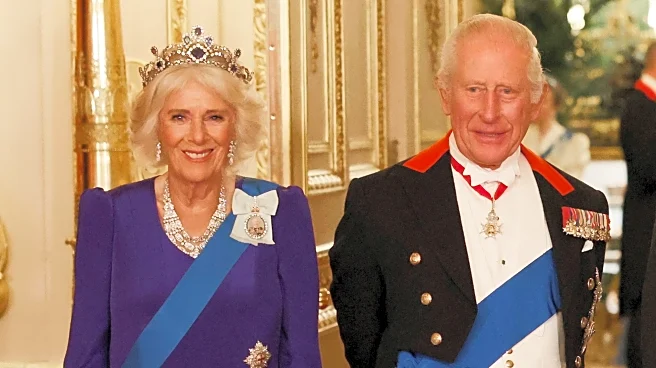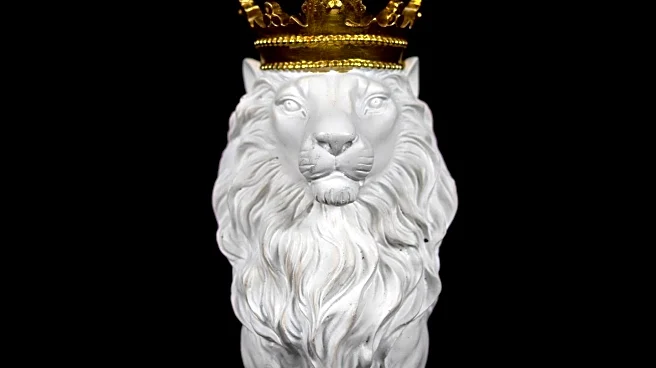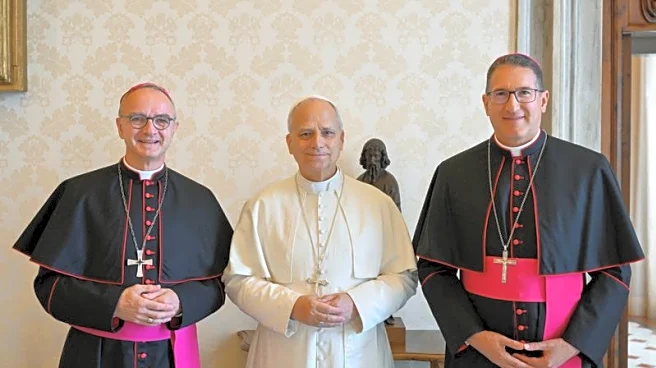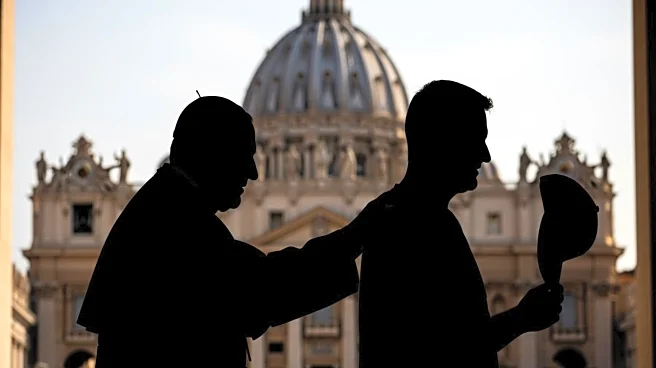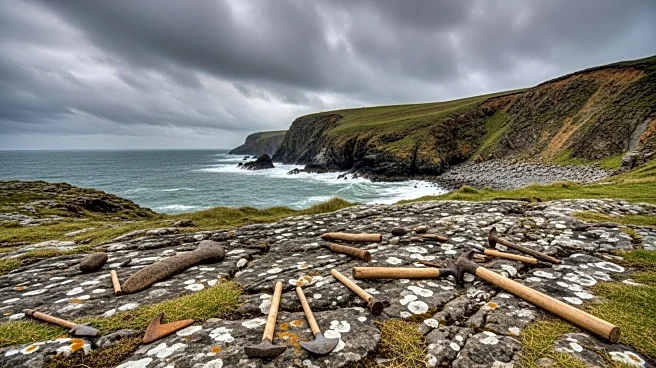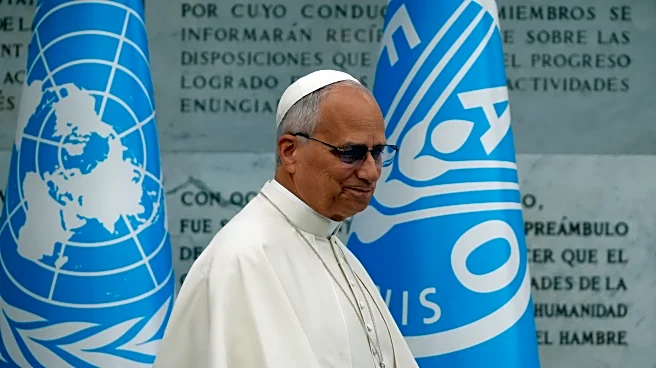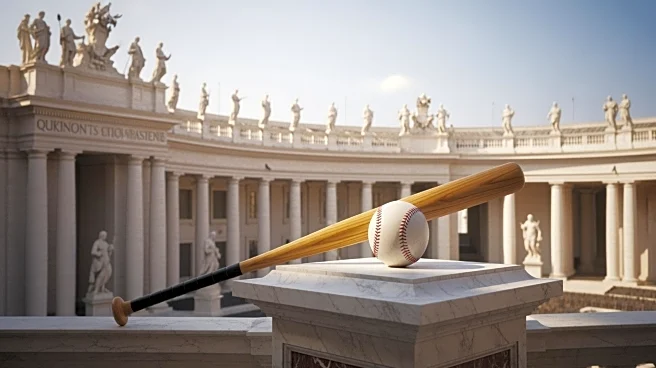What's Happening?
King Charles III of Britain and Pope Leo XIV are set to participate in an ecumenical prayer service at the Sistine Chapel on October 23, marking a historic moment in the relationship between the Catholic Church and the Church of England. This event is significant
as it is the first time since the Reformation that the leaders of these two Christian denominations will pray together. The visit, originally scheduled for April, was postponed due to the illness and subsequent death of Pope Francis. During the visit, King Charles will receive the title 'Royal Confrater' at St. Paul’s Outside the Walls, a basilica with strong ties to the Church of England. This title symbolizes spiritual fellowship and includes a special chair with his coat of arms, which will remain for use by Charles and his heirs.
Why It's Important?
This event is a significant step towards unity between the Catholic Church and the Church of England, which have been divided since the 16th century. The prayer service underscores a shared commitment to addressing global issues, such as environmental stewardship, and represents a continuation of efforts to bridge theological differences. The visit also highlights the evolving role of the Church of England in global Christianity, especially with the upcoming leadership of Sarah Mullally, the first woman to be appointed as the Archbishop of Canterbury-designate. The absence of Mullally from the service due to her pending installation reflects ongoing discussions about the ordination of female priests, a point of contention between the two churches.
What's Next?
The visit is expected to foster further dialogue between the Catholic Church and the Anglican Communion, potentially paving the way for more collaborative efforts on global issues. The symbolic gestures during the visit, such as the conferment of the 'Royal Confrater' title, may encourage other religious leaders to pursue similar reconciliatory actions. The event could also influence the broader Anglican Communion, which spans 165 countries, to engage more deeply with the Catholic Church on shared concerns, despite existing theological differences.
Beyond the Headlines
The visit may have deeper implications for interfaith relations, as it demonstrates a willingness to engage in dialogue despite longstanding doctrinal differences. It also highlights the role of religious institutions in addressing contemporary global challenges, such as climate change, by leveraging their moral authority and influence. The event could inspire other religious communities to seek common ground and collaborate on initiatives that transcend doctrinal boundaries.
